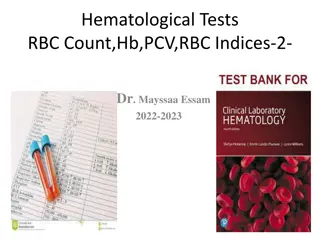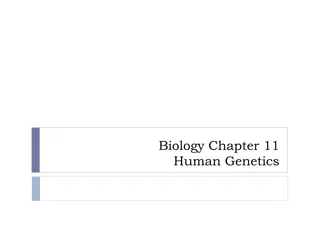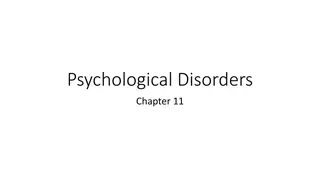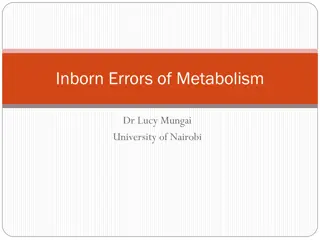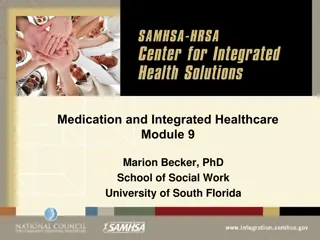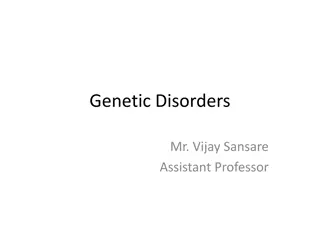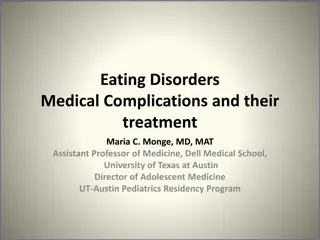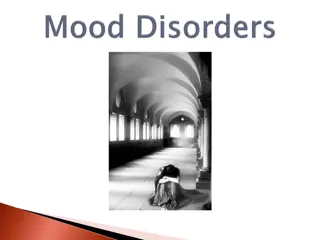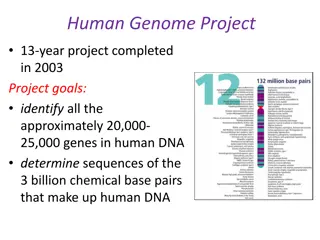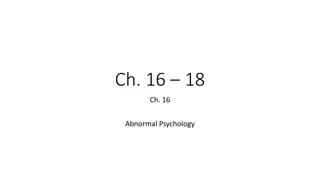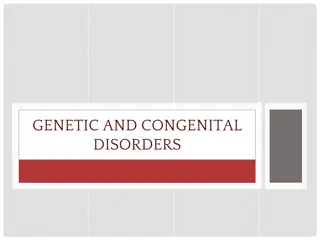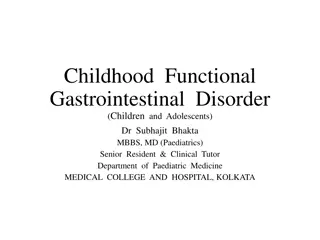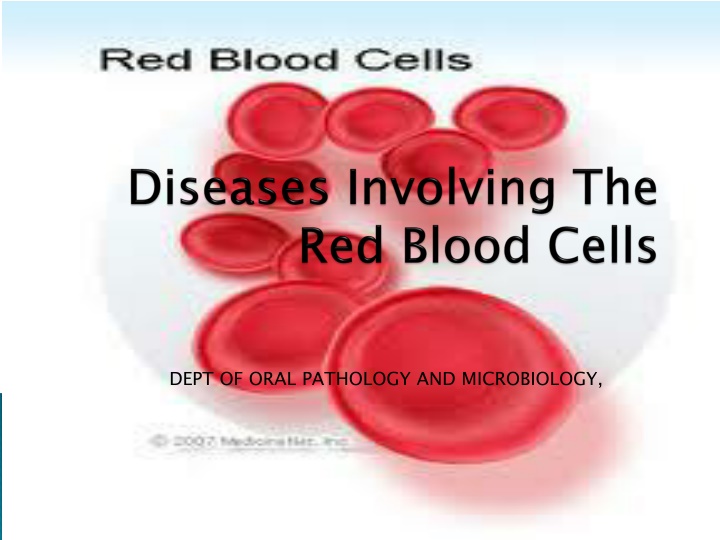
Understanding Thalassemia and Sickle Cell Anemia: A Comprehensive Overview
Explore the genetic disorders of Hb synthesis - thalassemia and sickle cell anemia. Learn about clinical features, lab investigations, and manifestations in this informative lecture presentation.
Download Presentation

Please find below an Image/Link to download the presentation.
The content on the website is provided AS IS for your information and personal use only. It may not be sold, licensed, or shared on other websites without obtaining consent from the author. If you encounter any issues during the download, it is possible that the publisher has removed the file from their server.
You are allowed to download the files provided on this website for personal or commercial use, subject to the condition that they are used lawfully. All files are the property of their respective owners.
The content on the website is provided AS IS for your information and personal use only. It may not be sold, licensed, or shared on other websites without obtaining consent from the author.
E N D
Presentation Transcript
At the end of lecture student should be able to Define anaemia Describe clinical features of thalassemia and sickle cell anaemia Lab investigations of thalassemia and sickle cell anaemia.
Genetically determined disorder of Hb synthesis with decreased production of either alpha or beta polypeptide chains of Hb molecules, which results from markedly decreases amounts of globin messenger RNA.
Presence and absence of globin chain Alpha thalassemia Beta thalassemia In heterozygous Thalassemia minor Thalassemia trait In homozygous Thalassemia major Homozygous thalassemia
Siblings are commonly affected Occurs within the first two years of life. Yellowish pallor of the skin Exhibits fever, malaise and generalized weakness. Splenomegaly and hepatomegaly
Rib within a rib appearance Skull- Extreme thickening of medulla and inner and outer cortex become poorly defined. Hair on end or crew cut appearance in parietal bones Intraoral- peculiar trabecular pattern of maxilla and mandible Coarsening of trabeculae and blurring and disappearance of some- salt and pepper effect
Hereditary type Characterized by production of structurally abnormal HB HbA is genetically altered to produce substitution of valine for glutamine at 6th position.
Significant bone changes in the dental radiograph. Mild to severe generalized osteoporosis Loss of trabeculation of jaw bones with the appearance of large, irregular marrow spaces. Prominent in alveolar bone.
Congenital hemolytic anemia due to Rh incompatibility results from the destruction of fetal blood brought about by reaction between maternal and fetal blood factors. It is due to the inheritance by the fetus of a blood factor from the father that acts as a foreign antigen to the mother.
Deposition of blood pigment in enamel and dentin in developing teeth, giving them green, brown or blue hue. Enamel hypoplasia-usually involves incisal edges of ant. Teeth and middle portion of deciduous cuspid and 1st molar crown. Characteristic ring like defect occurs Rh Hump
Types of Anemia -Thalassemia, Sickle cell Clinical features Lab investigations
Basic Pathology. Kumar, Cortan, Robbin. sixth edition. Shafers Oral Pathology. Basics of hematology. Kwathilkar.3rd edition. Neville Oral Pathology


